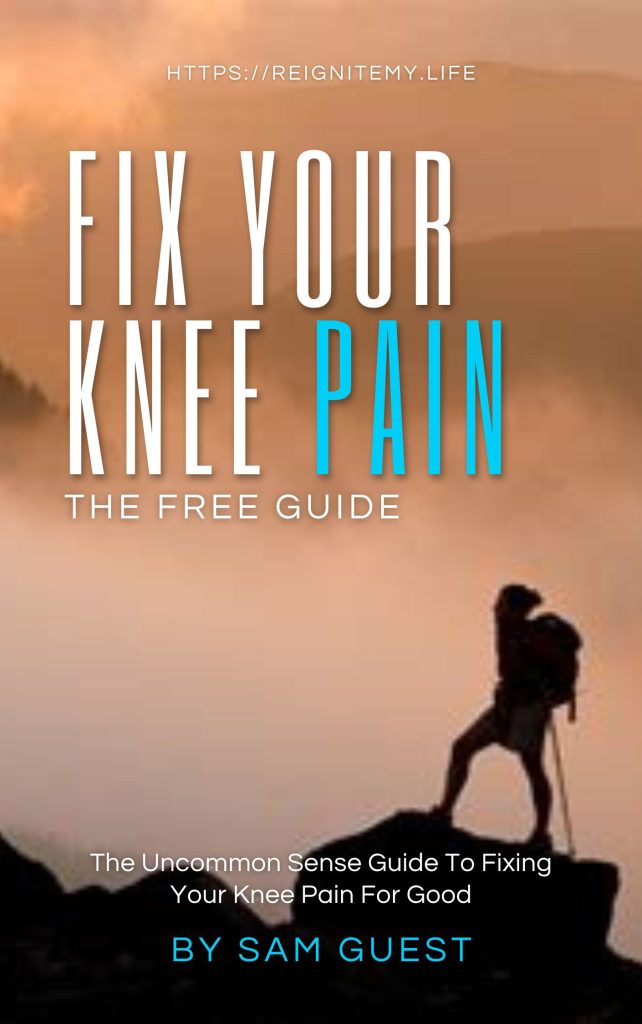Do me a favour stand up on your tip toes.
Now think about where your weight is going in your feet.
Did your weight shift to the outside of your foot on to your little toes? Did you wobble all over the place? Was your foot leaning to the outside as in picture 2 below?
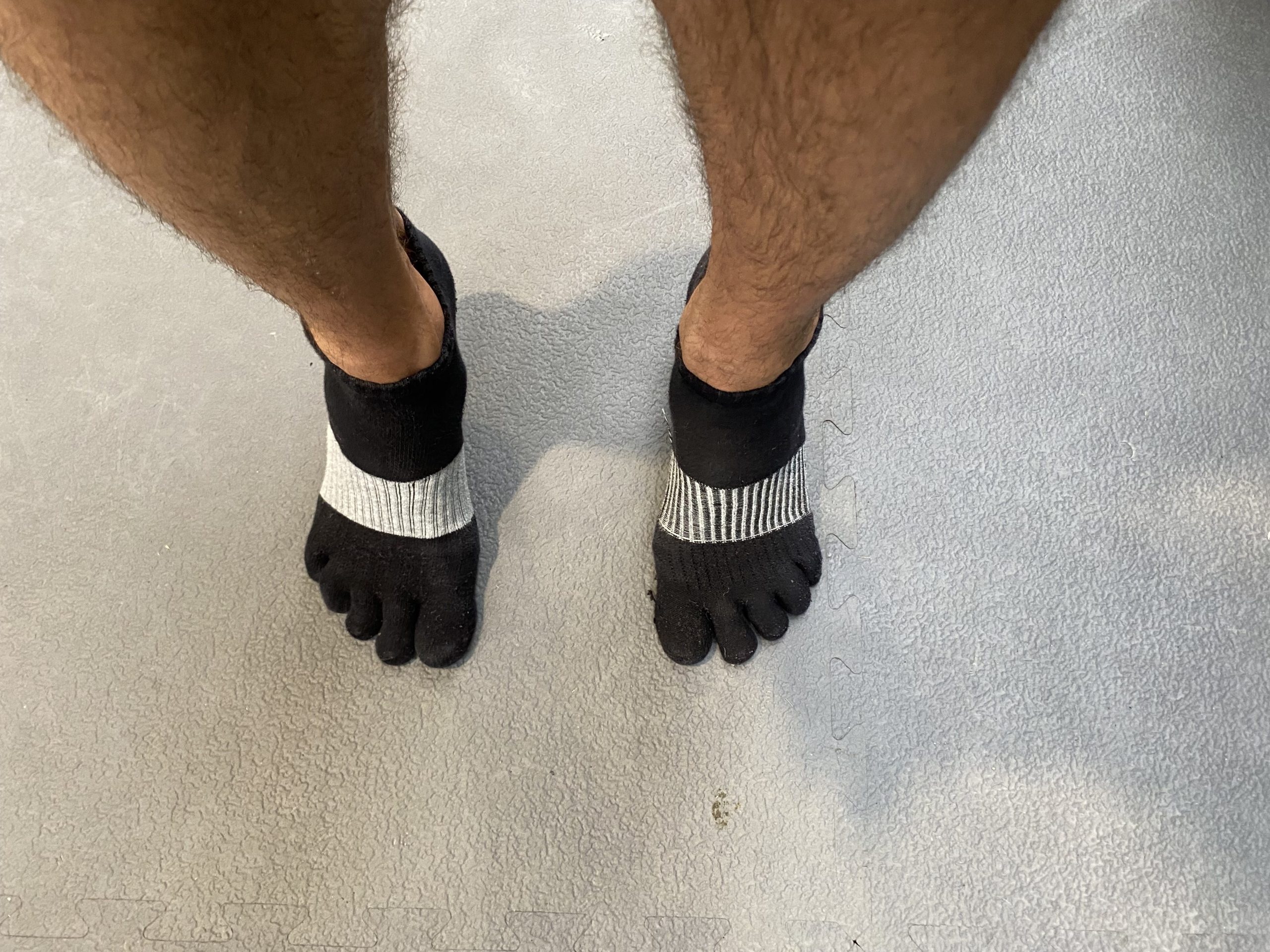
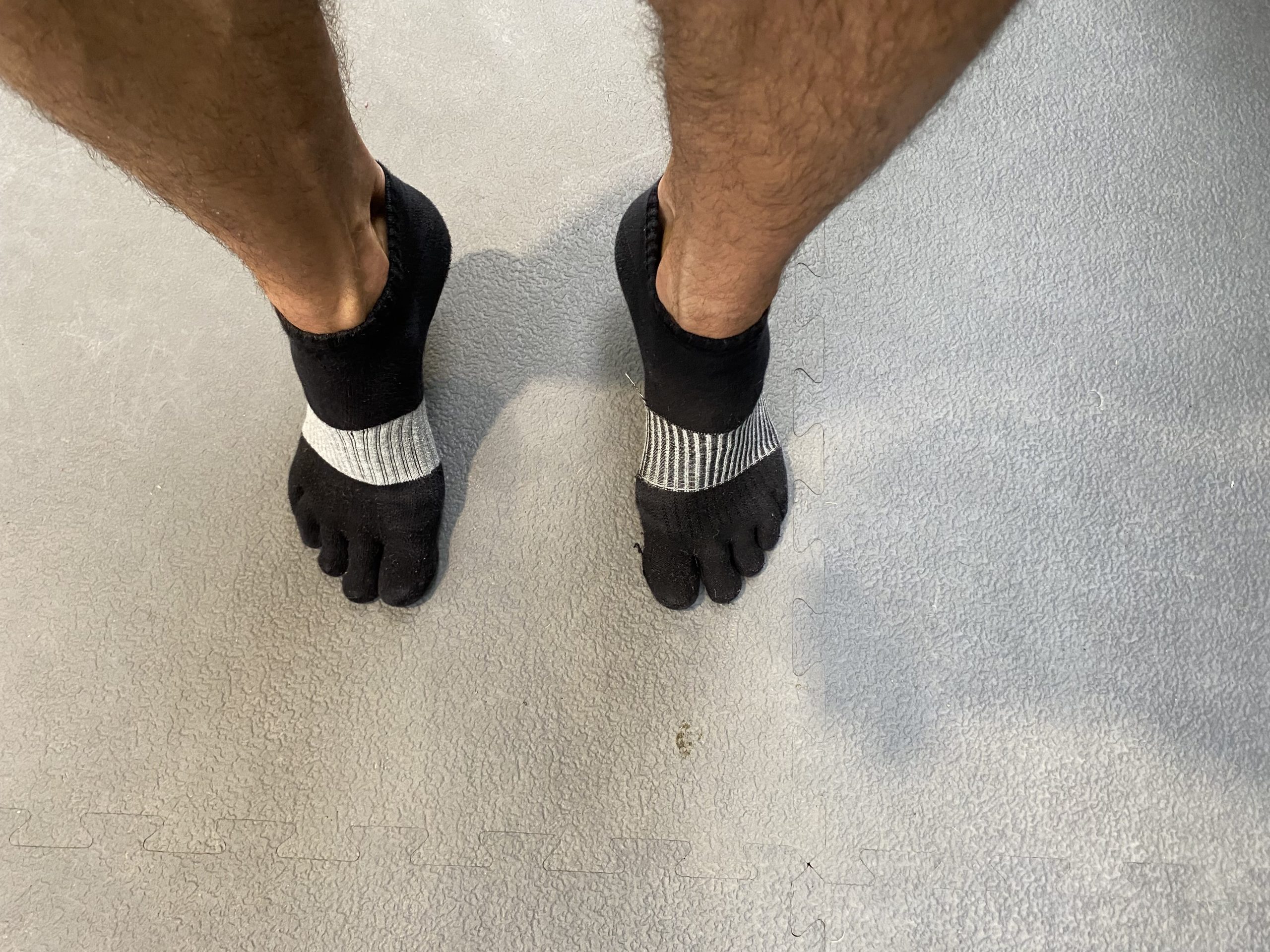
Now perform a single leg squat as shown in the picture below.
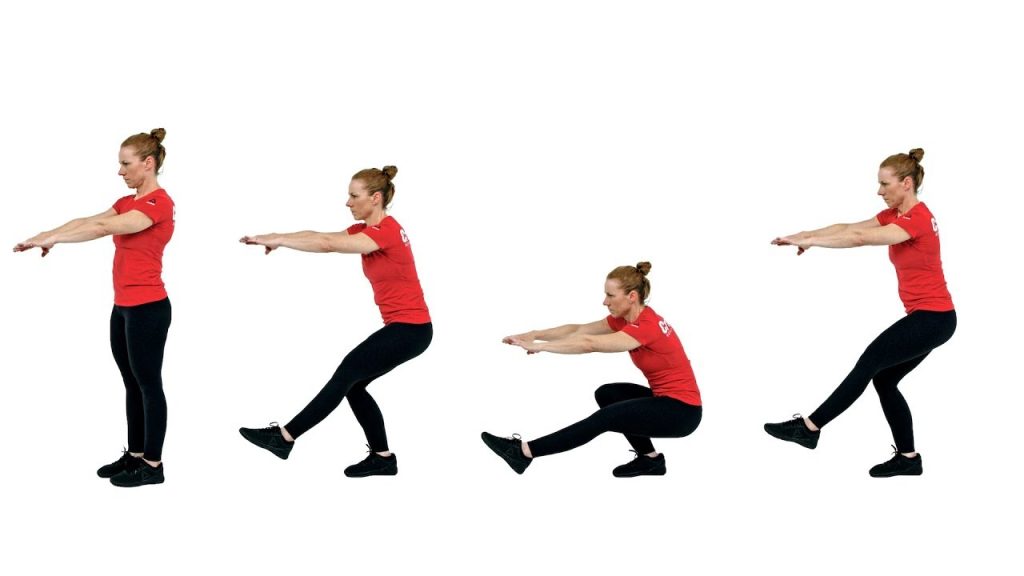
Focus on what your knee is doing as you perform this.
Did your knee want to move inwards towards the centre line of your body? Did it wobble all over the place?
If the answer to either of these questions is “Yes” congratulations you’ve just identified the cause of your knee or hip pain (and most probably the first link in the chain to your lower back, shoulder or neck pain).
The good news is, as long as there are no underlying complications this is pretty straight forward to fix.
So What’s Going On?
When you wear trainers the shape of them forces the big toe inwards.
Now it turns out the big toe is REALLY important for balance and posture.
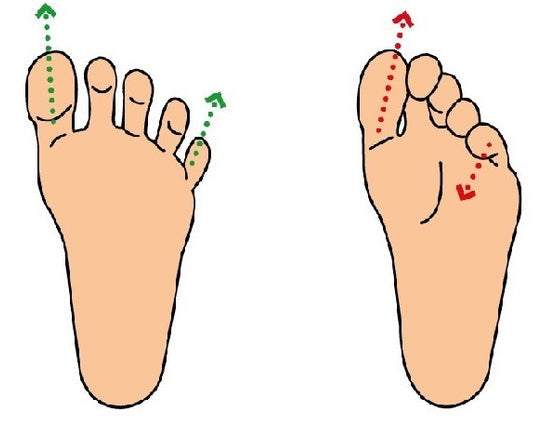
The brain expects the big toe to be in a splayed out position shown by the green arrows in the diagram, to provide balance along the instep, when it isn’t there anymore the foot naturally rocks inwards as we walk which in turn causes the knee to cave.
This forcing of the big toe inwards effectively stops it from working, which in turn causes it to switch off and weaken over time.
Now the big toe is also linked through a chain of muscles to the Glute Medius, an extremely important muscle which is responsible for pulling your femur into the hip socket. When the big toe disengages in this manner the glute medius turns off, meaning it gets weaker and slacker over time.
As your glute medius weakens the femur moves out of the socket when loaded with weight (ie when you jog) and just like a see-saw, the knee has to cave to compensate for this outwards movement at the hip.
So in the diagram below, imagine the femur moving OUT away from the hip and the knee joint caving IN as a result.
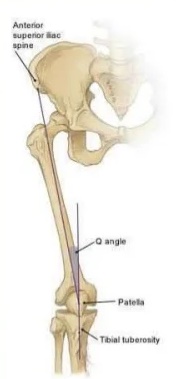
As the knee caves the body has to correct this and straighten up the knee joint, otherwise you’ll fall over when you walk. So it tilts the foot towards the outside which has the effect of straightening the knee.
You can try this right now, stand in and simulate a knee cave, then simply tilt your foot outwards and you will see how the knee straightens up.
Why This Is A Problem?
Unfortunately in doing this it disengages the big toe even more as your big toe is now hovering in mid air when you walk.
This leads to a cascade effect where this situation only gets worse and worse as your hip gets looser and looser, your knee caves more and more and your foot moves further onto the outside to compensate, further disengaging the big toe, which turns the glutes off even more.
By this stage the hip is really unstable so the lower core, especially the area of the lower back, jumps in to try to stabilise it. A job its really not designed for but which it can provide a bit of help with. Unfortunately as it’s not designed for this it has to work very hard. Meaning it is constantly under tension and knackered.
I give to you the cause of your…
Back Pain
This will probably eventually lead to sciatica type symptoms if not treated as the muscles start gripping the nerves around them as well.
Now that the lower core is doing the glutes job it’s not doing its own job and so you start to sag at the middle (you won’t notice this but your brain does) and so the Traps (those triangular muscles running from your shoulders to the base of your neck) decide they can help by switching on hard and pulling you up like a puppet.
So now your Traps are constantly firing, meaning they are up by your ears most of the time, and there’s the cause of your shoulder/neck pain.
If you get a stiff neck after doing sit ups, this is what’s happening…you’re using your traps rather than your core to pull you up…and they are letting you know they don’t like it as they aren’t really designed for it but can help out in a pinch.
And thus you see how this entire chain starts in the humble big toe.
Now you may be saying, “Well that sounds well and good but I’ve only got pain in one of these places.”
I hear you.
The amount of pain you’re in and the number of places this is showing up is simply a measure of how far along the process you are, and where your personal, structural weak points are.
The good news is, in the absence of complicating factors such as spinal injuries, this is relatively easy to fix and can be done in a matter of weeks with hard work (this is somewhat dependent on your level of strength going into the program) by simply turning on and then building up the muscles which the body has turned off and forgotten about.
In doing this we get you out of pain fast (often you’ll notice dramatic improvements in just a few days) and go on to improve your posture to a point where movement in general become much easier.
If you’re interested to join along for the ride, jump on my “Get Rid of Knee, Hip, Lower Back, Shoulder or Neck Pain – 4 Week Program” (I know its a catchy title!) starting on Monday. You can sign up here.

